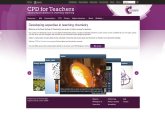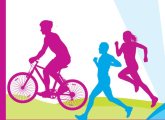The usual picture of a student revising is head hunched over a desk littered with open books, notepad, pen and highlighters. To study ‘well’ the student rarely lifts their eyes from the pages in front of them – and they certainly don’t look out of the window at the passing clouds; this would be ‘off task’ and a waste of precious time before the exam. But does this model really work?
Education research linking motivation, engagement and autonomy suggests that in fact, revising might be done far better with a more hands off, hands on approach. How is this possible? The fear would be that not to studiously ‘get one’s head down’ is to risk failure. Yet, in education outside of the mainstream school systems – in home education and democratic choicebased schools – where children idle, ponder, wander around and simply get involved in what they like, when they like, they seem to be learning the same amounts over the course of an education as a child stress-stuffing themselves with knowledge in fixed curricula based schooling.
In fact, some young people in non-mainstream education end up excelling in certain areas because their interest becomes highly engaged. The lesson for revision is: whilst a broad and balanced curriculum may be a noble educational aim, what appears to matter most for children’s well-being and educational attainment at the higher levels is personal interest. Alas, our school system’s fixed curricula cannot cater for every young person’s unique and diverse enthusiasms. But how they revise can.
Niche interests
So what does personalised education give as a revision advantage? Well, for education to be tailored to a child, they need to choose and consent. Thus, how and in what order a student revises material in readiness for the exam is key; they should be free to design their own approach.
The theory from autonomous education is that personal design of learning gives the child authority. This in turn gives them command: a sense of ownership and responsibility, enabling them to get properly ‘stuck in’ – which common sense, and possibly our own past experience of revising, tells us is good news. It can offer being ‘in the zone’ and ‘flow’ (see: tinyurl.com/ tswikiflow).
When revision is personalised, it can even be fun. A student revising should bring in their interests and dreams about things that fire them up – be that art, fashion, sport, music or whatever – and combine these with the material they need for the exam. Creativity is key and according to Bloom’s Taxonomy (tinyurl.com/ tsblooms), the highest level of engaging with exam content is to be able to “produce new or original work”. Whilst this isn’t strictly what some exams these days require, it is relevant to others – and useful for all. A feeling that revising is not just repeating and remembering what other people have done and written is the aim. Through creatively engaging with revision materials, the student is being called to care; they are empowered.
Apply, analyse and evaluate
To use Bloom’s taxonomy fully is to target all the skills a student might be called upon to use in an exam situation. If in revising they can apply what they are learning, then they will be able to “use information in new situations”. So placing a ruler on a pencil sharpener and then attempting to get it balanced with a rubber on one end and some tiny knick knacks on the other is to apply the principle of finding the missing number to balance a maths equation. Who knows what the question will be, come exam day? The point here is that a student can see the idea behind the revision topic in practice and get a feel, by applying the idea, for how it works, as a mental exercise. This kicks off interest and develops flexible thinking.
If in revising students can analyse what they are learning for the exam they will be able to “draw connections among ideas”. To analyse, the students need to dissect and deconstruct – so for example, why not draw a map of the knowledge, get out a pair of scissors and chop it up, have a shuffle, then work out how the now isolated ideas fit together?
Last to mention, in Bloom’s hierarchy of skills, is evaluating as an approach. This is to “justify a stand or decision”, which means the student has taken a position. They have an attitude. As any teacher knows, children love to have an attitude… and in Bloom’s sense this can be used to significant exam advantage.
Ultimately, when it comes to effective revision, young people should trust their own choice of method rather than stick to an outdated idea of what study should look like. That picture might simply disadvantage them; whereas finding the fun, surprise and creativity to be had from understanding and being able to recall knowledge can help ensure students achieve the exam success of which they are really capable.
In brief: 5 ways to make revision their own
Personalise!
Whatever the subject, a student can deal with it in their own way. Do they like fashion? Associate a designer’s name with different aspects of the topic. Are they into football? Put the knowledge into categories and name each after a famous footballer. Do they sing? Add a melody to the information. Write stories? Turn it into a fictional account. Making knowledge personal matters.
Break!
Take a little break, go for a short walk, watch TV (but time it). The brain can process and synthesise information during study breaks, and giving oneself a short chance to think subconsciously about what has been read is a form of work. This tunes into lessons from research on the value of mindfulness, silence, pausing and meditation for learning.
Create!
Create something from what is being studied. This is the highest level of Bloom’s Taxonomy of engagement. Draw, construct a model… it doesn’t matter what is made, as long as a student uses what they need to know to create it. For example, balancing maths equations might end up as a seesaw.
Critique!
Get angry with the content for all its flaws. A student can get to know the reasons why they find it lacking/ stupid/ boring. Then find what is great and works for them. This takes them halfway to knowing both the good and the bad aspects and thus knowing it wholly. Holistic understanding means a flexible, confident response to an exam question.
Discover!
Waste some time. Wander around the internet looking for leads, like a detective, to things about the topic never encountered in school. Expand the curricula content to surprising, unknown areas (then return to the exam related foci). This will broaden a student’s mind for the area and stimulate engagement through surprise – key to effective remembering.
About the author
Dr Helen E Lees is a freelance academic, education journalist and writer of books on learning alternatively.










